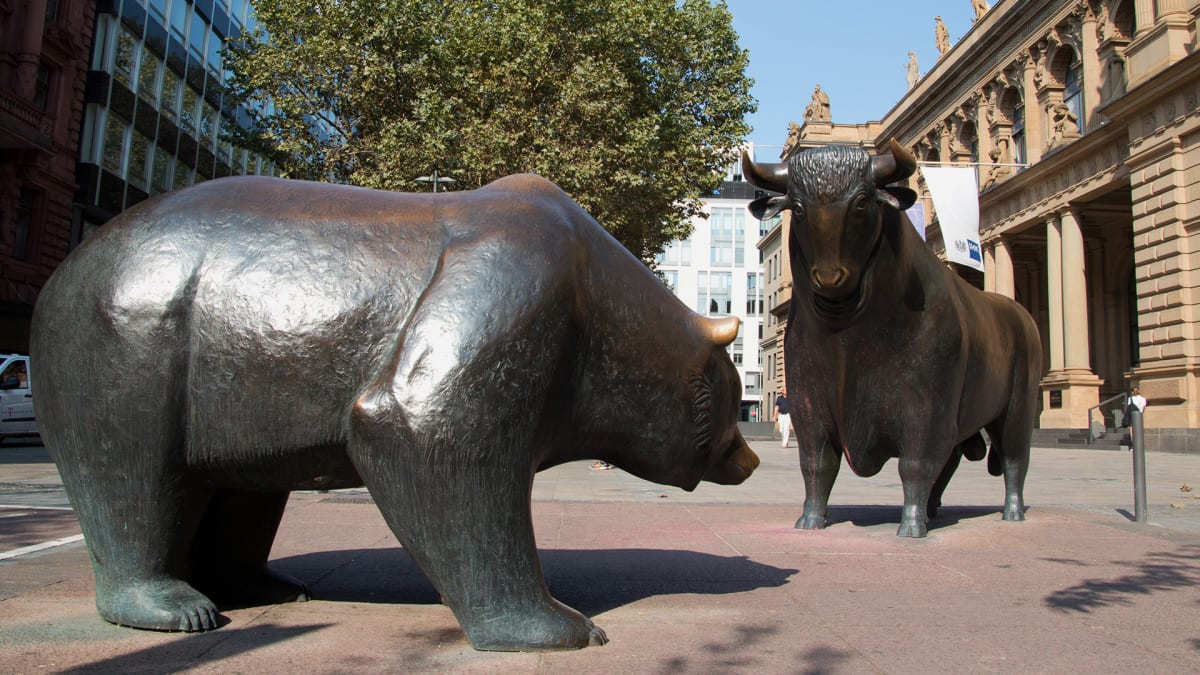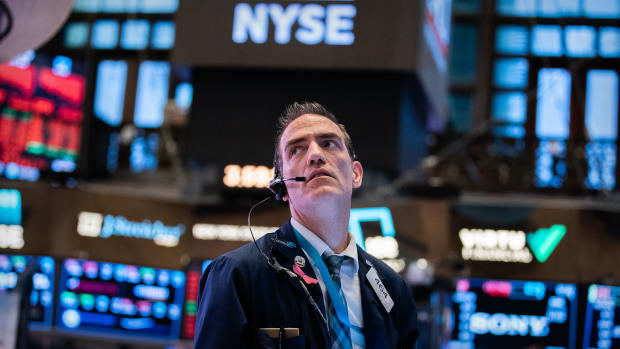
Stocks surged in the first quarter, with the S&P 500 index rising 7%, as investors grew optimistic the Federal Reserve has almost finished raising interest rates.
But experts don’t expect stocks to move much for the rest of the year, with positive and negative factors balancing each other out. “There are a number of crosscurrents in the market,” says Michael Sheldon, chief investment officer of Hightower RDM Financial Group.
Before we get to the crosscurrents, it’s worth noting that the biggest stocks in the S&P 500 -- particularly technology stocks -- were responsible for almost all of its first-quarter jump.
Indeed, the largest 20 stocks in the index accounted for 92% of the gain in market capitalization during the first quarter, according to Bloomberg and Apollo Global Management.
A hefty 46% of S&P 500 stocks actually fell in the quarter, according to FactSet.
The biggest gainers were semiconductor titan Nvidia (90%), social media giant Meta Platforms (76%) and electric vehicle titan Tesla (TSLA) (68%).

Jeenah Moon/Getty Images
Economy, Consumer Spending are Positive
As for the conflicting factors, on the positive side, the economy and consumer spending are holding up well, experts say. Personal consumption expenditures gained 0.2% in February, after soaring 2% in January.
“The worries about the economy are probably overdone,” says Mick Heyman, an independent financial advisor in San Diego. “It can weaken, we can have a recession. But that’s not always negative for stocks, unless we have a severe credit crisis like 2008.”
The plus side is that economic weakness leads the Fed to cut interest rates, helping earnings, he says.
On the inflation front, with price increases having peaked, the Fed is likely almost done raising interest rates, Sheldon says. The year-on-year consumer price index peaked at 9.1% in June and totaled 6% in February.
But Chris Litchfield, a retired hedge fund manager and now a private investor, says it’s not clear yet that inflation is under control. “Any unpleasant news [on prices] over the next few months could mean more Fed rate hikes,” he says.
Heyman says interest rates could stay around current levels for a while. “But the economy is working with rates at these levels,” he says. “For most of the last century rates at 4% to 5% rates aren’t terribly high.”
Earnings Drop is Likely Coming
On the negative side for stocks, earnings are likely headed lower. Analysts predict profits will fall 7% for the first quarter and 4% in the second quarter, Sheldon says.
They anticipate a rebound for the second half of the year, leading to an increase of 1.5% for 2023 as a whole. But experts say estimates are likely too high.
One silver lining for equities, Sheldon says: they tend to bottom before profits.
The recent failure of three regional banks also could portend trouble for the stock market, having already exerted some downward pressure last month. “It looks like it’s contained,” Sheldon says of the banking crisis. “But regional banks may tighten credit, which could lead to a slowdown of the economy.”
But that may not be all bad. “The banking turmoil is doing a lot of the Fed’s work for it,” says Jack Ablin, chief investment officer of Cresset Capital. Fed Chairman Jerome Powell said the turmoil has acted like an interest-rate increase.
When it comes to valuation, the forward price-earnings ratio for the S&P 500 was 17.8 as of March 31. That compares to the five-year average of 18.5 and the 10-year average of 17.3.
Heyman sees the present level as neutral. “Relative to interest rates, maybe that’s a little expensive, but not through the roof,” he said. “We have had both great bull markets and large corrections with valuations at these levels.”
Still, Litchfield says that at current valuations, “stocks don’t feel that attractive compared to bonds and where they might go – higher yields.”







